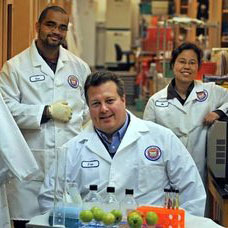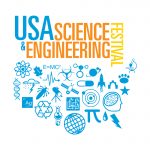Biography
Microbiologist Eric Brown: The Science Of Identifying Microorganisms Responsible For Foodborne Diseases
A prominent leader in his field, Eric Brown, Ph.D., is Director, Division of Microbiology, Office of Regulatory Science, at the Food and Drug Administration (FDA). He is especially known for revolutionizing how the FDA identifies and tracks microorganisms that are responsible for foodborne disease outbreaks. He also spearheaded development of GenomeTrakr, a database that allows local public health agencies to deposit sequence data from clinical cases and regulatory agencies to deposit data from routine food production testing that ensures food safety.
In the FDA´s Division of Microbiology, Dr. Brown oversees a group of 50 researchers and support scientists engaged in a multi-parameter research program to develop and apply microbiological and molecular genetic strategies for detecting, identifying, and differentiating bacterial foodborne pathogens such as Salmonellaand shiga-toxin producing E. coli. His early work on horizontal gene transfer among foodborne pathogens has aided in shedding light on the causes of several emerging pathogens including many of the Group I salmonellae as well as enterohemorrhagic and enteropathogenic E. coli. More recently, his laboratory has been instrumental in adapting next-generation sequencing technologies to enhance foodborne outbreak investigations at the FDA.
Dr. Brown received his Ph.D. in Microbial Genetics from The Genetics Program in the Department of Biological Sciences at The George Washington University. He has conducted research in microbial evolution and microbial ecology as a research fellow in the National Cancer Institute, the U.S. Department of Agriculture, and as a tenure-track Professor of Microbiology at Loyola University of Chicago. Dr. Brown came to the FDA in 1999 and has since carried out numerous experiments relating to the detection, identification, and discrimination of foodborne pathogens.
He has been a member of the American Society for Microbiology since 1994 and has co-authored more than 70 publications and book chapters on the molecular differentiation and molecular evolution of bacterial pathogens. His primary research interests are currently to investigate the role of next-generation genome sequencing in the resolution of foodborne outbreaks and to continue to employ a variety of methods that allow for rapid and sensitive identification of enteric pathogens (harmful bacteria prone to live in the intestinal tract) from the food supply.
Click here for more information.


































